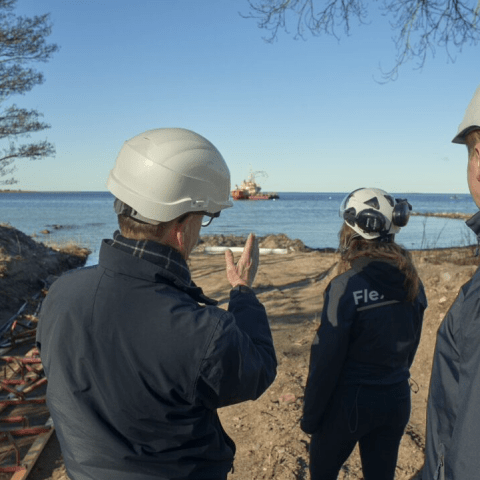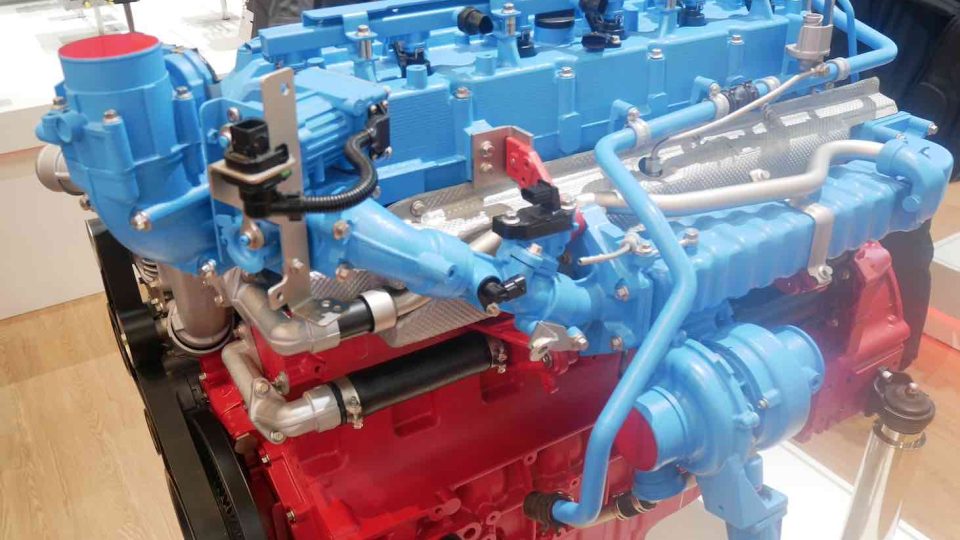Lhyfe, Flexens and the Stockholm University present the BOxHy project for the Baltic Sea
The Baltic Sea Oxygenation and the Super-Green Hydrogen Economy project, also known as “BOxHy”, is a collaborative effort between Lhyfe, Flexens, a strong regional developer of hydrogen projects, and Stockholm University’s Department of Ecology, Environment, and Plant Sciences (DEEP).

The Baltic Sea Oxygenation and the Super-Green Hydrogen Economy project, also known as “BOxHy”, is a collaborative effort between Lhyfe, Flexens, a strong regional developer of hydrogen projects, and Stockholm University’s Department of Ecology, Environment, and Plant Sciences (DEEP).
The main objective of the project is to tackle the problem of “anoxia” (the complete lack of oxygen in the marine environment) in the Baltic Sea by injecting oxygen into the sea through the production of offshore hydrogen from the water electrolysis, an adapted and existing technology. The project will evaluate suitable offshore locations for conducting a pilot study of the reoxygenation of marine ecosystems via the oxygen co-produced during this electrolysis of water. Commenced in October 2023, the BOxHy project, which is coordinated by Flexens, is expected to conclude in October 2024. The Baltic Sea Action Plan (BSAP) Fund is funding the project.
Injecting pure oxygen below the pycnocline could, in conjunction with external nutrient input limitation, eliminate anoxia in the Baltic Sea. In the BSAP-funded study published in Oct 2022, Vahanen and Jacobs investigated the concept. To continue the work, the BOxHy project will initiate the pilot site preparation for testing oxygen injection in the Baltic Sea.
Deep Oxygen Injection (DOI)
Deep oxygen injection, also known as DOI, is a method where pure oxygen gas is released deep under the water’s surface, below a region where strong changes in water density occur, using a system that spreads out the oxygen evenly with micro-bubbles. This type of system is already used in several freshwater lakes in the United States. The project will identify a suitable fjord-scale pilot site for DOI and begin its preparations, including stakeholder engagement and identifying potential funding sources.
“Restoring the oxygen conditions of the Baltic Sea deep water by long-term oxygen additions would have many positive effects on the Baltic Sea ecosystem”, says Jakob Walve, marine ecologist at DEEP, Stockholm University, and adds: “The habitat for cod reproduction and feeding would greatly expand. We can also expect lowered phosphorus concentrations as more will be bound in sediments, and thus less intense bloom of nitrogen-fixing, toxic cyanobacteria”.
The role of Lhyfe in the BOxHy project
Lhyfe has already piloted the world’s first offshore green hydrogen production facility via the Sealhyfe project of LeCroisic, France. As part of the BOxHy project, Lhyfe will investigate the integration of DOI technology with the offshore hydrogen production platform, and the replicability of the platform in the Baltic Sea environment.
In 2017, when Lhyfe was founded, the idea of Matthieu Guesné was to combine decarbonizing transport and industry by producing green hydrogen, while at the same time using the co- produced oxygen to reoxygenate prone ocean regions. While the success of Sealhyfe is already proof of the possibility to produce green and renewable hydrogen offshore, the installation of a pilot reoxygenation unit is still a matter of research and development.
Matthieu Guesné, founder and CEO of Lhyfe: “Reoxygenation is at the heart of the Lhyfe project. Back in 2017, we imagined a way of massively decarbonizing transport and industry by producing and supplying renewable hydrogen and, at the same time, contributing to the reoxygenation of the oceans as part of our offshore projects. We are very proud to be taking this next step with Flexens and DEEP, Stockholm University. Through this type of initiative, as well as reducing our carbon footprint, we can imagine providing a service to the environment and having a positive impact on the natural ecosystem.”









